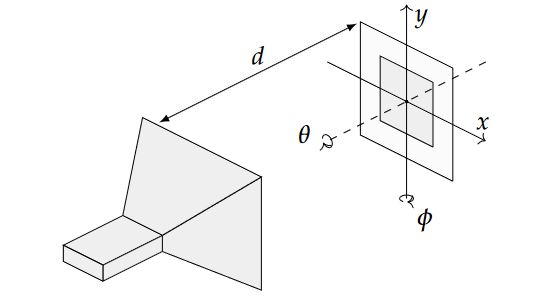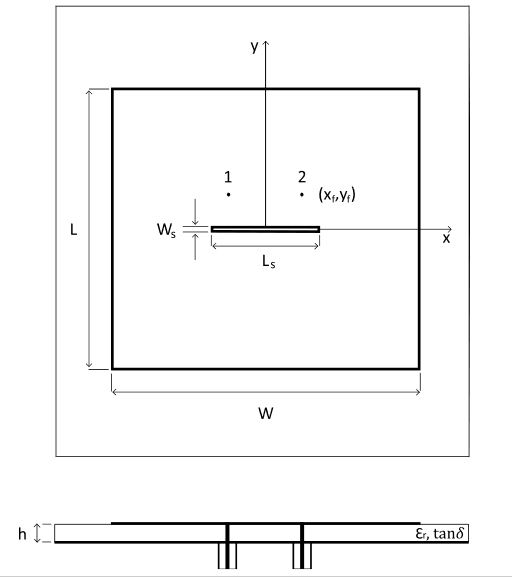ABSTRACT
The efficiency of a wireless power transfer (WPT) system in the radiative near-field is inevitably affected by the variability in the design parameters of the deployed antennas and by uncertainties in their mutual position. Therefore, we propose a stochastic analysis that combines the generalized polynomial chaos (gPC) theory with an efficient model for the interaction between devices in the radiative near-field.
This framework enables us to investigate the impact of random effects on the power transfer efficiency (PTE) of a WPT system. More specifically, the WPT system under study consists of a transmitting horn antenna and a receiving textile antenna operating in the Industrial, Scientific and Medical (ISM) band at 2.45 GHz. First, we model the impact of the textile antenna’s variability on the WPT system.
Next, we include the position uncertainties of the antennas in the analysis in order to quantify the overall variations in the PTE. The analysis is carried out by means of polynomial-chaos-based macromodels, whereas a Monte Carlo simulation validates the complete technique. It is shown that the proposed approach is very accurate, more flexible and more efficient than a straightforward Monte Carlo analysis, with demonstrated speedup factors up to 2500.
MATERIALS AND METHODS

Figure 1. Equivalent circuit of a wireless power transfer (WPT) link, i.e., a transmit antenna and a receive antenna with rectifier (rectenna)
we represent them by means of two equivalent circuits as in Figure 1. More specifically, the transmitter is driven by means of a Thevenin generator composed of a sinusoidal voltage source Vg and an internal impedance Zg, whereas the receiving antenna is modeled as a Norton equivalent with a short circuit current Isc and load impedance ZL. The receiver also includes a matching circuit and a rectifier to transform the alternating current (AC) power received by the antenna into the direct current (DC) power delivered to the load RL.
RESULTS

Figure 3. Simulation setup where an standard gain horn (SGH) acts as transmitter and a patch antenna as receiver

Figure 4. Schematic of the dual polarized probe-fed Industrial, Scientific and Medical (ISM) band textile antenna under study
The proposed approach is demonstrated on the WPT system shown in Figure 3. The transmitting device is a standard gain horn (SGH) antenna radiating at 2.45 GHz with a power of 10 dBm. The receiving device is a 2.4–2.4835 GHz ISM band textile microstrip probe-fed dual-polarized patch antenna, using a flexible closed-cell expanded rubber foam as substrate, and shown in Figure 4. The antennas are placed at a separation distance d and their phase centers are aligned.
DISCUSSION
The proposed approach allows quantifying the variations of both the link efficiency ηLINK and the PTE of a WPT system in a more efficient and flexible way than both an SCM analysis based on a single g PC expansion and a Monte Carlo analysis. As shown in Table 3, both the number of full-wave simulations and the overall CPU time necessary to perform the analysis are greatly reduced for both ηLINK and PTE.
CONCLUSIONS
In this manuscript, an SCM analysis of the efficiency of a WPT system in the radiative near-field subject to antenna variability and position uncertainties has been presented. More specifically, a first SCM analysis is carried out to account for the impact of uncertainties in the design parameters of the antennas on their radiation characteristics. The resulting gPC expansions are used as macromodels that allow computing the antennas radiation characteristics in a more efficient way than full-wave solvers.
Then, a second SCM analysis quantifies the impact of both the variability of the deployed antennas and the uncertainties in their mutual position on the efficiency of the WPT system. This is done by leveraging the previously computed gPC-based macromodels and a very efficient model for WPT systems in the radiative near-field. Finally, the proposed approach is validated by means of a WPT system consisting of an SGH antenna and a 2.45 GHz ISM band textile antenna. Compared to an SCM analysis based on a single gPC expansion, as well as to a standard MC analysis, the method shows excellent agreement and superior efficiency.
Source: Ghent University
Authors: Marco Rossi | Gert-Jan Stockman | Hendrik Rogier | Dries Vande Ginste
>> Project Report on Microstrip Patch Antenna for Final Year Students